After a cockroach invasion, you are most likely to see baby cockroaches around your house after a few weeks. Both of them (adult and baby cockroaches) are equally annoying and pose a serious health risk as they carry multiple disease-causing viruses, bacteria, and other pathogens in their body.
Just like adult cockroaches, baby cockroaches forage for food and water in your kitchen, bathrooms, and at other dirty places. This is why it is extremely important to get rid of them.
How to get rid of baby cockroaches? For getting rid of baby cockroaches, you can use various insecticides (sprays, baits, dust) and also natural pest control methods for their extermination. First, you need to identify them and clean your house to remove any food and water source. Only after that, you should start with the application of insecticides.
In the following section, we have created a comprehensive identification guide for baby cockroaches. Moreover, we have provided a step by step instructions for getting rid of them in your house and outdoors. Let’s begin!
How to Identify a Baby Cockroach?
Accurate identification of baby cockroaches is the key to effectively eradicating the infested cockroach species in a short time. However, the required time and method of eradication can vary depending upon the level of infestation, kind of pest, surrounding conditions, type of insecticide, and other factors.
Like other insects, cockroaches also lay eggs and deposit them in protective casings also known as oothecae. An ootheca contains multiple eggs, although, their number and characteristics vary depending upon the type of cockroach species. After a few weeks, the eggs hatch and produce young ones or baby cockroaches that are also called nymphs.
Each female cockroach has the ability to lay hundreds of eggs over a life cycle and their remarkable reproducing potential makes them a difficult pest to deal with. According to a study based in the United States (2015), cockroaches are one of the three most difficult pests to control for professional exterminators after bed bugs and ants.
Like adult cockroaches, baby cockroaches have two long antennae, six spiny legs, and a hard-shelled flattened body. They both show similar behavior but baby cockroaches or nymphs are smaller in size.
What Color Are Baby Cockroaches?
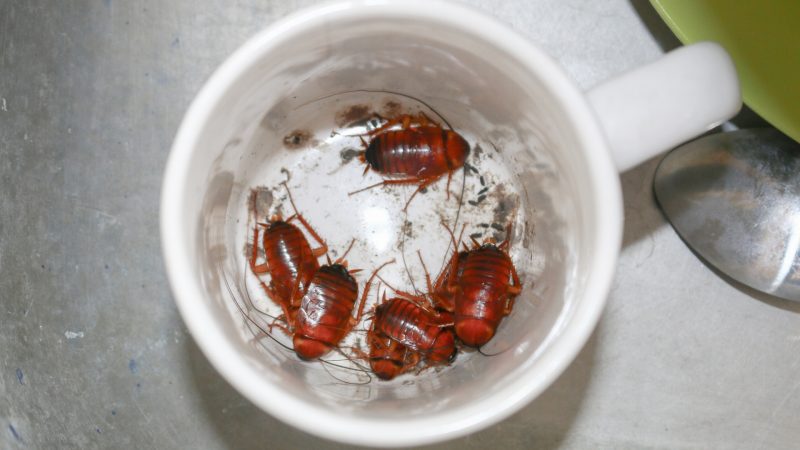
Baby cockroaches may or may not be similar in color to adult cockroaches. The color or appearance of the baby cockroaches can vary according to the type of cockroach. They may be lighter or darker than adult cockroaches depending on the species.
For instance, German cockroaches (1/2 inch long) have a light brown appearance with two parallel lines on their back whereas the baby German cockroach (1/8 inch long) has a darker body (blackish) and one stripe on its back.
The adult American cockroaches measure up to 2 inches in length and have a reddish-brown body and halo markings on their head. However, young American cockroaches are about 1/4 inch long and have a grayish-brown appearance. Baby Pennsylvania wood cockroaches have a tan bodies and are larger than young German cockroaches.
Do Baby Cockroaches Have Wings?
The primary difference between young and adult cockroaches is the absence of wings and their smaller size in comparison to adults.
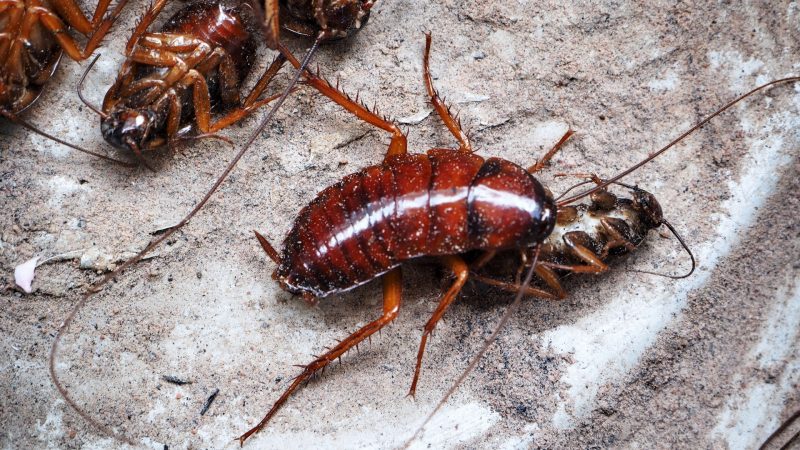
Nymphs and adult cockroaches may resemble each other in behavior or in other characteristics but they can be differentiated on the lack of wings. Wings are developed during the final stages after a series of molts or when they mature.
Are Baby Cockroaches White?
After an adult female cockroach lays eggs, they hatch in 8 to 12 weeks. The baby cockroaches are white in color after they emerge from the egg case. The body of the baby cockroach becomes harder and turns darker (usually deep brown in color) within a few hours.
Following a series of molting stages, the baby cockroaches develop into an adult in a few months.
Are Baby Cockroaches Red?
The body color of baby cockroaches can vary according to the species of cockroach. For instance, nymphs of oriental cockroaches are reddish-brown in color whereas adult oriental cockroaches have a black appearance.
The baby smoky brown roaches have black bodies that turn smoky brown after the molting phase. In brown-banded cockroaches, the body of nymphs and adults have a brown appearance.
How to Get Rid of Baby Cockroaches?
Most species of cockroaches live outdoors, they are attracted to your house by sensing the food and water trails or due to changes in weather. Baby cockroaches may not cause structural damage to your house but they can be equally as frustrating as adult cockroaches.
Cockroaches grow rapidly and have the ability to produce a large number of young ones in a few months. It should be controlled earlier to minimize the potential damage in the future.
The eradication of baby cockroaches is no different from adult cockroaches. The most effective method to eliminate baby cockroaches is the integrated pest management approach.
Professionals use this approach to eliminate baby or adult roaches in an efficient way. The method involves various steps including prevention tips, application of insecticides (one or more methods), stopping re-infestation, etc.
In the following section, we have given a step-by-step guide for getting rid of baby cockroaches and prevention tips to reduce the chances of their re-establishment.
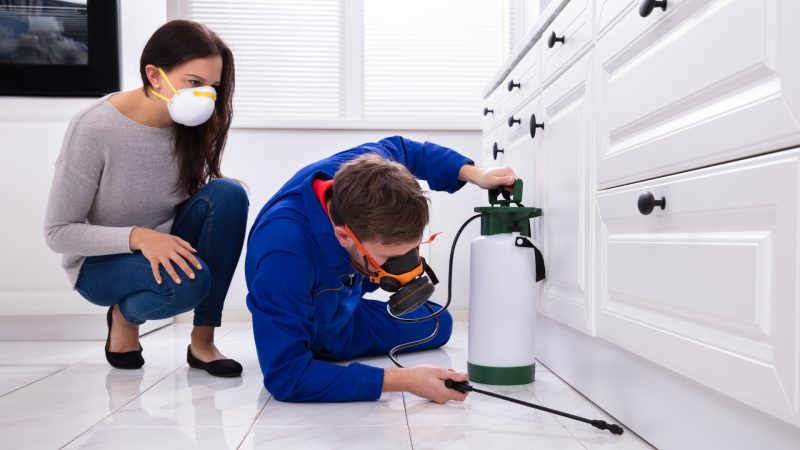
Step 1: Investigation and Inspection of Infested Sites
The presence of baby cockroaches in your house or outdoors is an indication of a heavy infestation. The first step to getting rid of baby cockroaches is thorough inspection and investigation of infested sites.
Locate the nests of cockroaches and build an estimate of the population of adult or baby cockroaches. You need to make a decision at this stage whether you can tackle the infestation by yourself or if you should contact pest control professionals.
If you want to take action, then you should have an idea about the type of pest and level of infestation.
Step 2: Look for Potential Sources of Infestation
After an investigation of nesting sites, look for the potential sources that attract cockroaches to your house. Cockroaches live in rotten or dirty surroundings, and excessive moisture or poor sanitary situation might be the reason for roach infestation in your house.
Therefore, before taking further action eliminate all the sources or factors that can draw cockroaches into your house. Cockroaches can also invade your house due to harsh weather conditions. They enter your house and build shelters near moisture or inside dark and narrow places.
If you leave spilled food, leftovers, or pet waste overnight, it can also attract cockroaches to your house. Baby cockroaches and adults show similar behavior, and the only difference is their size and lack of wings. Clean your house thoroughly and remove garbage to keep roaches away.
Step 3: Application of Insecticides
Baits and Traps
Baiting is an effective way to get rid of baby cockroaches. Different types of baits are available commercially, they are mostly available in liquid, gel, powder, or granular form.
Gel baits can be applied with syringes inside wall cracks, and holes, or by using disposable containers to treat infestations that you cannot approach manually. They can be used inside kitchens, behind cabinets, or near potential nesting sites. Although baits are slow-acting, they are the best for long-term control and usually show results around 7 days on average. They can remain active for several months.
Bait stations come in ready-to-use pre-filled insecticide trays. You can also refill the bait station after it dries. Granular baits can also be applied around the perimeter of the house or garden for protection against baby cockroaches.
Some of the best recommended commercially available baits are:
- COCKROACH CONTROL: Advion Cockroach gel bait from Syngenta is a...
- VERSATILE USAGE: Advion Cockroach Gel Bait is suitable for indoor...
- HIGHLY ATTRACTIVE FORMULATION: Advion Cockroach has a...
- EFFORTLESS APPLICATION: With a plunger and user-friendly tips...
- CONVENIENT PACKAGE: This package includes four 30-gram syringes...
- Quick Kill Formula – Your secret weapon against roaches Starts...
- Eliminates the nest – Roaches take the bait back to the nest,...
- Protects your home – Child resistant bait stations provide...
- Ready to Use – Easy to use with nothing to activate. No mess,...
- Use throughout your home – place bait stations wherever roaches...
- COCKROACH CONTROL: Advion Cockroach gel bait from Syngenta is a...
- VERSATILE USAGE: Advion Cockroach Gel Bait is suitable for indoor...
- HIGHLY ATTRACTIVE FORMULATION: Advion Cockroach has a...
- EFFORTLESS APPLICATION: With a plunger and user-friendly tips...
- CONVENIENT PACKAGE: This package includes four 30-gram syringes...
Insecticide Sprays
Professionals also use insecticide sprays or aerosol sprays to treat cockroach infestation both indoors and outdoors. This method is a quick way to control pest attacks. However, the use of sprays can be hazardous in case of direct exposure.
Wear a mask, glasses, and gloves to avoid direct contact with a toxic chemical. Sprays are used when there is a larger infestation of cockroaches, not for a few intruders. You can reapply sprays at weekly intervals to control cockroaches. Treatment with insecticide should persist until all the eggs of roaches are hatched.
- Bug spray that quickly kills ants, roaches and flies
- Plant-based active ingredient bug killer safe for use around...
- Entomologist tested bug spray made with botanical extracts to...
- Bug killer for indoor and outdoor use, wherever bugs try to...
- Rooted in Nature, Optimized by Science
- Raid Ant & Roach kills a wide variety of insects including...
- Crawling insect killer with residual insecticide power for up to...
- Also kills palmetto bugs, silverfish, crickets, earwigs,...
- Ant & Roach spray with no lingering chemical odor
- Easy-to-use Ant & Roach killer for application where listed bugs...
- Effectively Kills Targeted Insects: Stealth solution for ant and...
- Active Ingredient: Chlorfenapyr, a pro-insecticide that works...
- Perfect for Use in Various Locations: Suitable for restaurants,...
- Targets a Wide Range of Bugs: Including cockroaches, ants, bed...
- Read, understand, and follow the label safety, application,...
Insect Growth Regulators (IGRs)
Insect growth regulators (IGRs) are applied with other insecticides to treat a large population of cockroaches. They do not kill baby cockroaches but instead, IGR interferes with their development process and disrupts their ability to reproduce.
- Hydroprene 0.36%.
- Including but not limited to: Apartment buildings, bakeries,...
- Shake well before use. As a general surface spray or spot...
- BREAK THE LIFE CYCLE: Nixlo IGR Concentrate contains 10%...
- TACKLE 50 + INSECT PESTS: Broad-spectrum Nixlo IGR Concentrate...
- HALT FUTURE INFESTATIONS: Nixlo IGR Concentrate targets pests at...
- USE NEARLY EVERYWHERE PESTS HIDE: Versatile Nixlo IGR Concentrate...
- GET CONTROL THAT LASTS: Nixlo IGR Concentrate provides lasting...
- Gentrol Point Source is a special Roach control device that...
- Activating Gentrol Point Source is as simple as squeezing the...
- This Product is a Non-Perishable
- USA Supply Gloves with USA Supply ReSist Technology
- USA Supply Pest Identification Card - Copyright 2024
Insecticide Powders and Dusts
Insecticide dust or powders can be applied near hideouts or in enclosed spaces. The common active ingredient used inside these products is boric acid, which is lethal for both baby and adult cockroaches. You can apply insecticide dust behind cupboards, underneath closets, inside cracks, or pantries using a duster.
- Protect your flowers and lawn from listed damaging pests
- Won't harm plants or blooms
- Kills by contact - over 150 listed insects
- Kills ants, Japanese beetles, whiteflies, aphids and many more...
- Ready to use - simply shake to apply
- PEST-KILLING DUST: Use indoors or outdoors to control listed...
- NO ODOR, NON-STAINING: Use a hand duster, power duster or squeeze...
- CONTROLS: Kills cockroaches, ants, silverfish, beetles, fleas,...
- WHERE TO USE: Use in enclosed spaces such as apartments, attics,...
- Garden safe diatomaceous earth
- Long Lasting - Continues to kill roaches, palmetto bugs, water...
- Fast Acting - Insects coming into contact with the powder will...
- Easy Application - The puffer bottle makes application quick and...
- Contains Irresistible Lure - Harris food grade lure attracts...
- EPA Registered - Made in the USA & Registered with the...
Step 4: Prevention Tips
After the application of insecticide, monitor the treated area for several months and reapply insecticide if needed. Take preventive measures to stop the re-growth or re-infestation of adult and baby roaches.
Remove all the food items from the kitchen counter and store them in enclosed containers. Cover your trash bins and remove all the spilled food and excess water.
Clean your house daily and get insect-repellent plants or apply insect deterrent essential oil sprays. Repair your leaky pipes and maintain good sanitation. Seal all the gaps and cracks that can provide shelter for cockroaches. All of this will help in preventing their establishment in your house.
How to Get Rid of Baby Cockroaches in House?
Different approaches are taken to eradicate baby cockroaches in different parts of the house (bedrooms, kitchen, bathroom, basement, garage, etc).
How to Get Rid of Baby Cockroaches in Bedroom?
If you see baby cockroaches in your bedroom, it’s an indication of a heavy infestation of cockroaches. Or they may be attracted to your room due to unhygienic conditions and leftovers. Cockroaches build nests in bedrooms behind closets, under furniture or inside electrical appliances, inside cracks or holes, etc.
You can use insecticide baits, sticky traps, insecticide dust, or sprays to get rid of them. Using baits and sticky traps along with IGRs (Insect Growth Regulators) is an effective way to eradicate both adult and baby cockroaches.
Keep your pets and children away during the application of insecticide spray and use PPEs for self-protection. Put insect-repellent plants inside the bedroom to deter their entry.
How to Get Rid of Baby Cockroaches in Kitchen?
Inside kitchens, cockroaches (especially German roaches) tend to build nests underneath cupboards, near leaky water pipes, under sinks, and under electrical appliances (fridge, oven, microwave, dishwasher, etc).

To prevent a baby cockroach infestation in your kitchen, wipe your kitchen floor and counters with detergent regularly, and don’t leave your food waste overnight. Repair leaky pipes and seal all cracks and properly store your food items.
You can eradicate existing baby cockroaches by using both chemical and natural ways. Although, it’s better to use natural cockroach killer inside your kitchen. Alternatively, you can also treat the infested areas with dust, IGRs, spray, or baits.
Related: How to Get Rid of Cockroaches in Kitchen Cabinets?
How to Get Rid of Baby Cockroaches in Bathrooms?
The bathroom is one of the most favorable places for cockroaches to thrive. It does not only provide warm and damp surroundings but also offers easy access to food such as hair, nails, skin, etc. In bathrooms, you can monitor cockroaches under sinks or bathtubs, inside drains, behind the toilet seats, or in other dark and narrow places.
To prevent a cockroach infestation in your bathrooms, remove excess water regularly after a shower, repair running taps or broken pipes, and discard toilet garbage daily.
You can use a liquid insecticide to treat baby roaches inside drains. Sticky traps and insecticide dust can also be applied at infested areas along with IGRs to completely eradicate baby cockroaches in bathrooms.
How to Get Rid of Baby Cockroaches in Bathtubs?
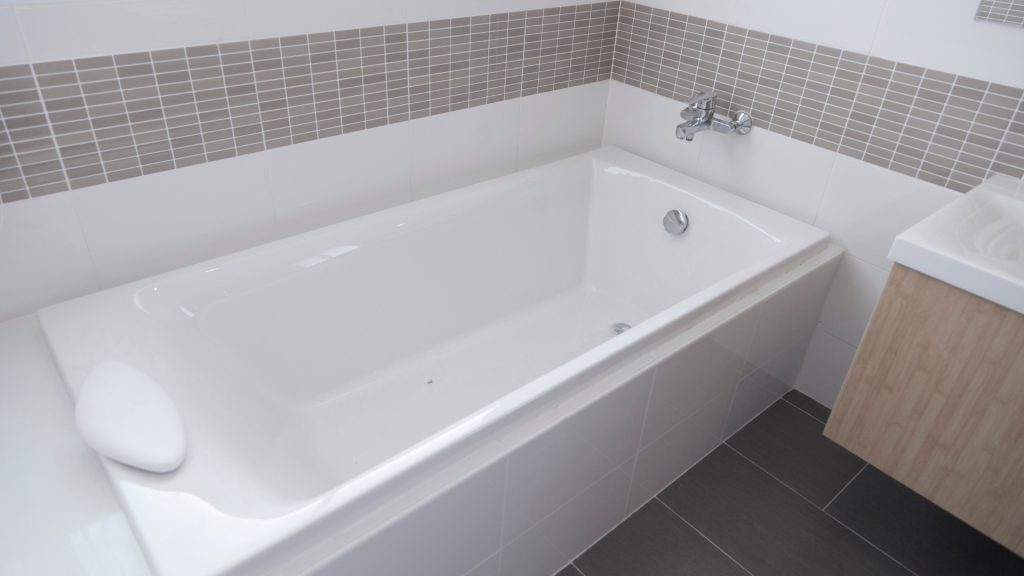
Cockroaches are attracted to warm and damp areas like spaces under the bathtub. Remove excess moisture under bathtubs and repair broken pipes. To eradicate baby cockroaches under the bathtub, apply insecticide spray using a nozzle. Or you can also use gel baits or sticky traps to lure cockroaches out of their nests to kill them.
How to Get Rid of Baby Cockroaches in Bed?
First, locate the nests of cockroaches. If there is a baby cockroach infestation under the bed or inside the wooden frame, you can apply gel baits, sticky traps, or insecticide dust to kill them. Insect growth regulators work best to control the growth of baby cockroaches. After treatment, clean the area, seal the cracks, and remove the factors that can attract them in the future.
How to Get Rid of Baby Cockroaches in Shower Area?
Baby cockroaches can also be seen inside shower drains. Treat the infested area using the desired insecticide solution (any will do what we have mentioned in the guide). The best would be to buy a liquid insecticide and pour it inside the drain by following the product’s guidelines.
Pouring a liquid insecticide directly into the drain can be damaging to the environment, so choose this option with care. Monitor the infested area for a few weeks. You can also install sticky traps or gel baits around infested sites to kill any baby cockroaches.
Related: What Does a Cockroach Look Like? (With Pictures)
Baby cockroaches are drawn to your basements due to potential food sources, moisture, or shelter. Keep your basement clean and eliminate the factors that are attracting them. Cockroaches will make shelters in dark corners of your basement and reproduce.
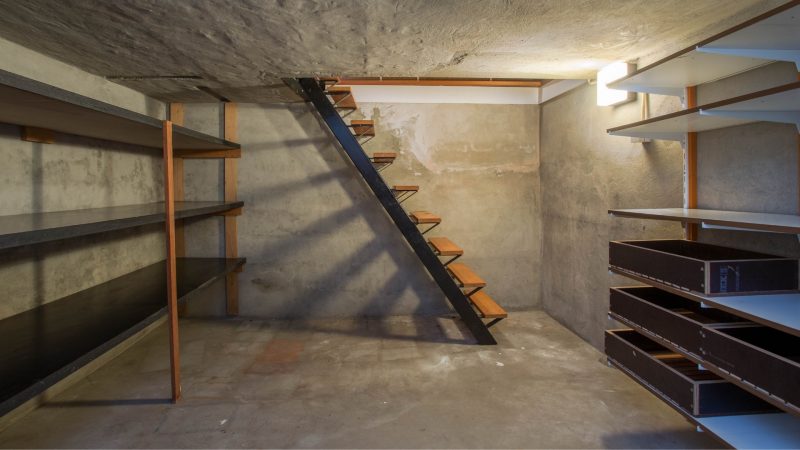
Baby cockroaches in the basement are a sign of a larger infestation. To get rid of baby cockroaches in your basement, you can use various chemicals and natural methods.
First, locate their trails and nesting sites. Treat the area with residual insecticide spray. Bait or traps can also be used to treat cockroaches in inaccessible areas. Apply insecticides with IGRs for better results.
How to Get Rid of Baby Cockroach in Closet?
Crumbs or other food traces can attract cockroaches inside your closet. They can also build nests behind the closet or cupboard. Apply baits or sticky tape around your closet. Otherwise, you can also put a nozzle on the insecticide spray to treat the narrow spaces behind your closet.
How to Get Rid of Baby Cockroach in Sink?
To effectively get rid of baby cockroaches in the sink, investigated the reason for cockroach infestation under your sink. Keep the area clean and repair your broken pipes or excess water under the sink.
You can treat the infested area under your sink using residual insecticide sprays, dust, or gel baits. Reapply insecticides every 7 days and inspect the area to completely eradicate the baby roaches.
How to Get Rid of Baby Cockroaches in Garage?
In the garage, baby cockroaches can be seen near moisture, around plant pots, or inside open garbage cans. Clean the area before treatment and locate their potential nesting sites.
Baby cockroaches can be treated by using insect growth regulators. It does not kill them but inhibits their growth. Afterward, apply liquid or solid insecticides around the infested sites to eliminate adult cockroaches.
How to Get Rid of Baby Cockroaches in Other Specific Places?
Other than the moist and dark areas in your house, baby cockroaches can also infest wherever they find a suitable environment. It can be your car, vending machines, coffee machines, dishwashers, fridges, dryers, etc. In the following section, we will cover some of these areas. Let’s begin!
How to Get Rid of Baby Cockroaches in Car?

Cockroaches can enter your car by following the food scent. To prevent cockroach invasion, keep your car clean and do not leave any wrappers or food residues inside of it. After the invasion, they can build nests under seats, inside car frames, trunks, or wherever they find small spaces. In a few weeks, you will see baby cockroaches running all over your car.
To eradicate adult and baby cockroaches, put baits under the seat and inside the trunk. Bait will lure them out of their hideouts and will kill them eventually. After the treatment, vacuum all the waste or dead cockroaches and clean it properly to prevent re-infestation.
How to Get Rid of Baby Cockroaches in Apartment?
Cockroaches invade apartments for a similar reason they invade houses. To keep cockroaches out of your apartments, take care of cleanliness, remove excess moisture, and discard your garbage regularly. You can also put insect-repellent plants in your apartment to deter their attack.
In case you see baby cockroaches in your apartment, then that is an indication of a severe cockroach infestation. Look for the nesting sites and get an idea about the level of infestation. Next, treat the infested site with a suitable insecticide such as spray, bait, traps, or dust.
How to Get Rid of Baby Cockroach in Food?
Finding cockroaches in your prepared or stored food might be the last thing you want to see. As cockroaches live in dirty and rotten places, they carry hundreds of disease-causing pathogens. If you discover cockroaches in your food, you should discard it immediately. The best approach is to store the food in a safe place and tightly sealed containers.
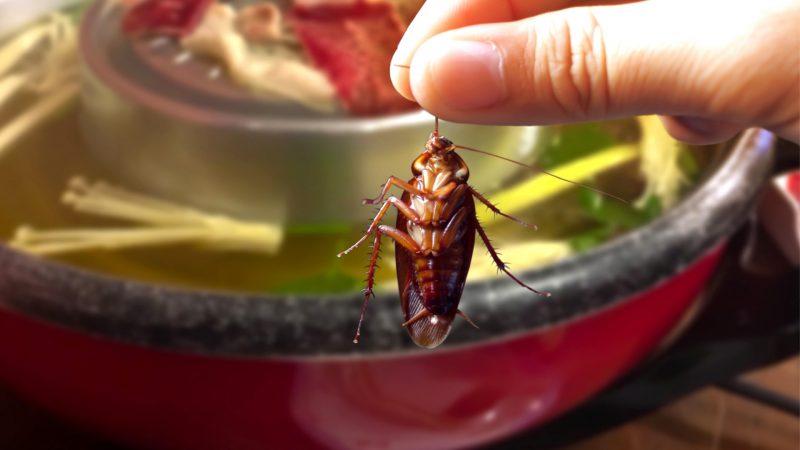
Baby cockroaches and adult cockroaches are both equally harmful and can be controlled using similar control methods. To keep cockroaches away from your food items, you can use natural repellents such as cinnamon, eucalyptus oil, tea tree oil or lavender oil, etc.
Alternatively, you can eradicate cockroach infestation in your food items by using baits or dust (such as diatomaceous earth).
How to Get Rid of Baby Cockroach in Hair?
Cockroaches are omnivorous scavengers, they can just eat anything such as books, packaging, decaying matter, or even hair. The bacteria in their gut help them digest these items. There are some reports of baby cockroach feeding on the hair of sleeping children but that is really a rare event.
This is only possible when there is a larger infestation of cockroaches in your room and if they are short of food supplies. If this happens, immediately take action and call a professional exterminator.
How to Get Rid of Baby Cockroach in My Ear?
Baby cockroaches rarely attack people, but they can get stuck accidentally in your ear during the night. Their smaller size helps them to go deeper into your ear. It can lead to an ear infection.
You can get rid of baby cockroaches in your ear by using tweezers or a Q-tip. It is recommended to seek professional help if this happens. Although, as we said, these cases are extremely rare to almost impossible.
How to Get Rid of Baby Cockroaches in Coffee Machines?
Adult or baby cockroaches like places containing moisture, nutrients, or darkness. Therefore, it is not surprising to see cockroaches inside the coffee machine. You can get rid of cockroaches by putting bait or trap near the coffee machine. This is the simplest way.
How to Get Rid of Baby Cockroaches in Dishwasher?
If you spot baby cockroaches in your dishwasher then this is an alarming sign. Take immediate measures and inspect the situation. Remove food debris from your dishwasher and put a cup of vinegar on the top rack and run a cycle of hot water to eradicate adult or baby cockroaches. You can also put cockroach bait in your dishwater to eradicate them as well.
How to Get Rid of Baby Cockroaches in Hotels?
Cockroaches in your hotel room can be really annoying. You can call the front desk for immediate help as they will ask pest control professionals to deal with the problem.
We suggest that you ask for another room or a refund as these problems are very hard to resolve in a short time span.
Related: Bugs That Look Like Baby Roaches | Identification and Comparison
Home Remedy to Get Rid of Baby Cockroaches
Conventional insecticides can be expensive and contain harmful chemicals that can be harmful to your pets or kids. In the following section, we have shared some of the best DIY natural home remedies for getting rid of baby cockroaches without using toxic chemicals.
Peanut Butter and Boric Acid Bait
To prepare peanut butter and boric acid bait, mix 1/3 cup of peanut butter in 2 teaspoons of boric acid. This is a perfect bait that lures cockroaches out of their nests and kills them after they consume the bait. You can also replace boric acid with baking soda.
Sugar and Baking Soda Bait
Mix an equal quantity of baking soda and sugar. Take the mixture and place it near the infested sites and at their entry points. The scent of sugar will attract adults and baby cockroaches toward the bait and baking soda will kill them eventually.
Vinegar Spray
For vinegar spray, mix an equal quantity of vinegar in hot warm water and apply it throughout the infested area. It will help to get rid of baby cockroaches and deter their re-infestation.
Peppermint Essential Oil Spray
- Safe
- Extra Concentrated for Long-Lasting Protection
- Natural Ingredients Proven Effective in the Real World
- Large 16oz Bottle
- Powerful Essential Oil
Peppermint is a natural insect repellent. You can put peppermint plants in your house or garden to act as a repellent. To prepare peppermint insecticide spray, you have to add 2 cups of water and 1 cup of vinegar in a spray bottle and put 10 drops of peppermint oil in the mixture. Treat the infested sites with peppermint spray as it not only kills the cockroaches but also keeps them away.
Diatomaceous Earth
- 100% Chemical-Free: Made from 10lbs of food-grade freshwater...
- OMRI Listed for Organic Use: Listed with the Organic Materials...
- Powder Duster Included for Easy Application: Comes with a powder...
- Sourced and Packaged in the USA: Responsibly mined in Nevada and...
- Multi-Purpose Use Indoors and Outdoors
Diatomaceous earth is a natural and eco-friendly insecticide powder. To get rid of cockroaches, sprinkle food-grade diatomaceous earth powder directly on baby or adult cockroaches to kill them. Or spread the dust around their nests to eradicate them.
List of Sources
Utah Pest Press, IPM Fact Sheet #2 (July 2013), Cockroaches, Utah State University
Sutherland, A.M. (2019), Cockroaches, Statewide Integrated Pest Management Program, University of California Agriculture and Natural Resources
Hahn, J. (2018), Cockroaches, University of Minnesota Extension
Potter, M. F. (2018), Cockroach Elimination in Homes and Apartments, University of Kentucky
Insect Growth Regulators, (2020), National Pesticide Information Center
- Bed Bug Surge 2025: How to Detect, Prevent, and Safely Eliminate Infestations in Top U.S. Cities - June 18, 2025
- Asian Needle Ants Invade US Homes: 2025 Guide to Identification, Risks, and Effective Control - June 11, 2025
- New World Screwworm Alert: How US Livestock Owners Can Prevent Outbreaks and Protect Herds [Summer 2025 Update] - June 8, 2025















